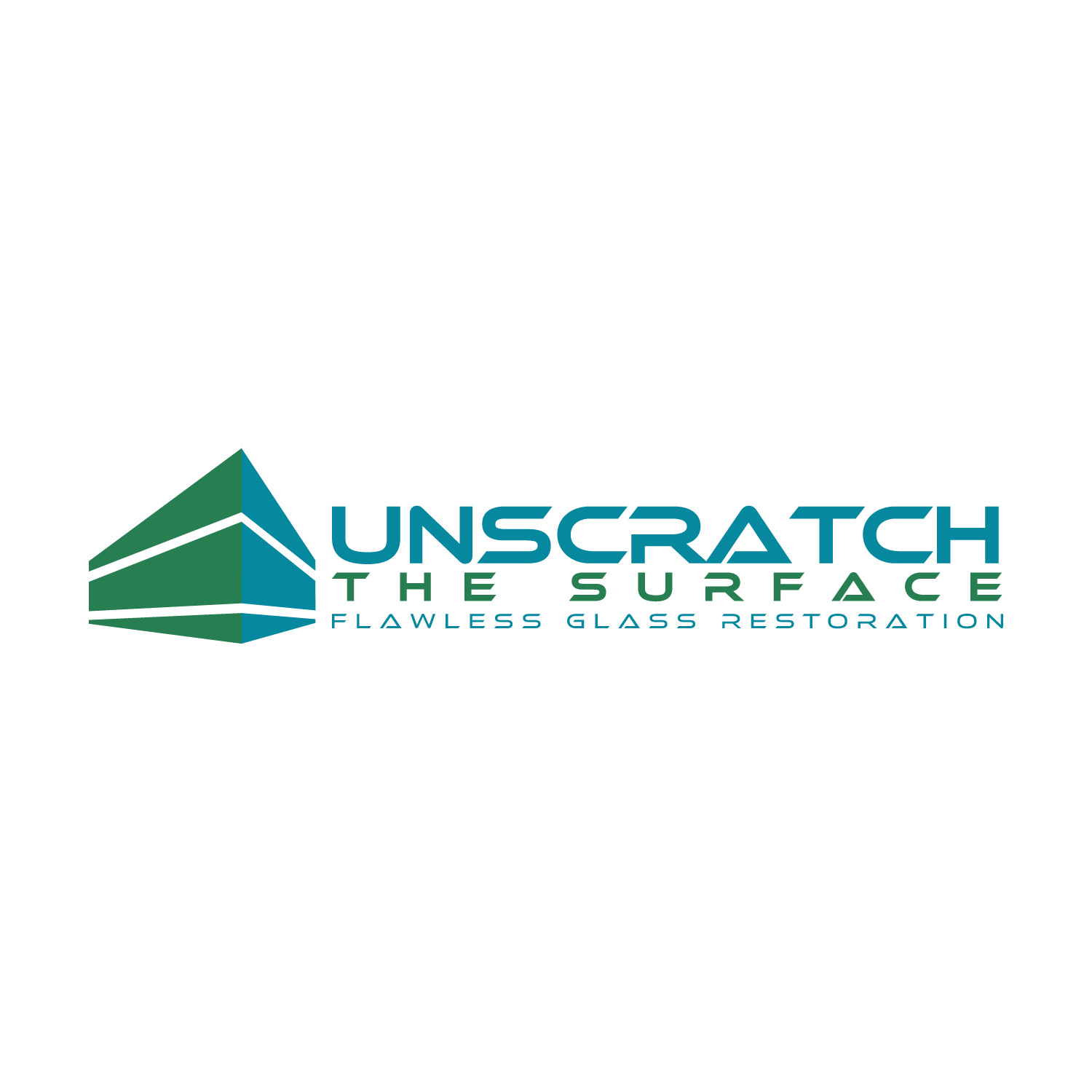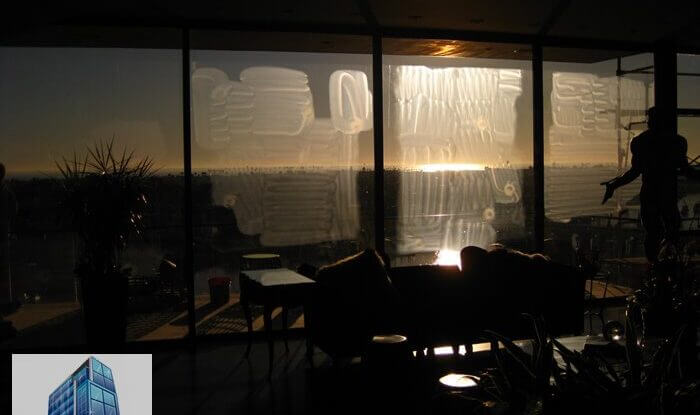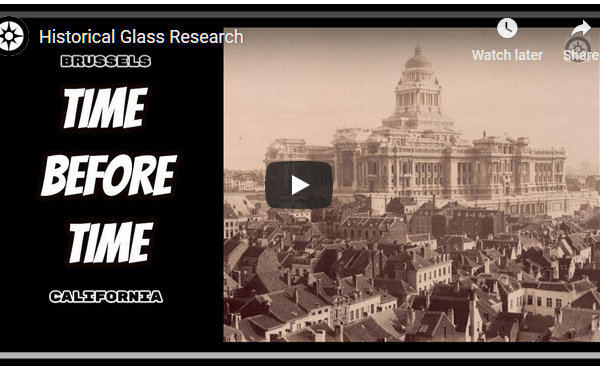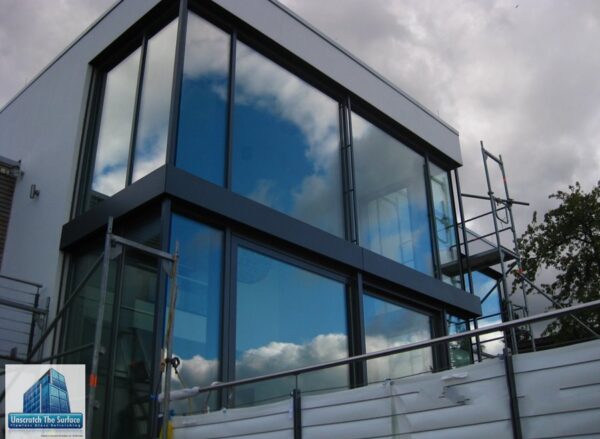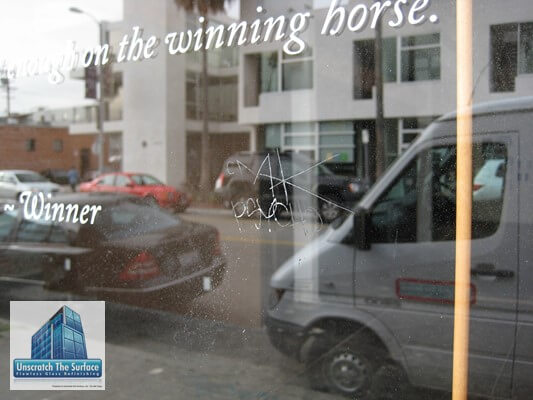Glass Restoration Improvements – Speed, Clarity, and Slickness
In 2005, when we originally developed our scratched glass restoration process, it was not designed for glass resurfacing of large windows and doors. However, in a short amount of time, we started seeing that the need for complete glass resurfacing was necessary for large glass windows and doors. The glass restoring products we had developed (and sold) up to that point would tend to leave swirls and haze pretty much all over the areas we had worked on. This feedback prompted us to innovate and refine our techniques, leading us to create more effective glass resurfacing services in Heikendorf. Our goal was to ensure a flawless finish that eliminated any imperfections and improved clarity without compromising the integrity of the glass. As a result, we have successfully expanded our offerings to meet the growing demand for high-quality glass restoration solutions in both residential and commercial applications. In addition to refining our resurfacing process, we also developed specialized reflective glass cleaning techniques that enhance the overall aesthetic of large glass surfaces. These techniques not only ensure cleanliness but also maximize the visual appeal, bringing out the natural brilliance of the glass. As we continue to innovate, we remain committed to providing exceptional service that exceeds client expectations and elevates the standard for glass restoration in the industry.
This is because those tools were only designed for isolated restoring light glass scratches and graffiti glass scratch repairs but definitely confined to a finite area. It wasn’t until we took over a project for a window cleaner turned glass resurfacing company in Chicago, IL. This occurred after he gave up on resurfacing the 8′ x 8′ windows after he noticed the windows were still covered with swirls and haze. The haze and swirls in glass were especially noticeable once the afternoon sun came around to those windows. So it was on this job that we actually discovered the steps and secrets involved in flawless glass resurfacing. Through trial and error, we refined our techniques and developed tips for restoring scratched glass that went beyond traditional methods. By understanding the type of scratches and utilizing the right tools, we were able to eliminate the haze and swirls, bringing the glass back to its original clarity. This experience not only transformed the windows in Chicago but also set the foundation for our comprehensive approach to glass resurfacing.
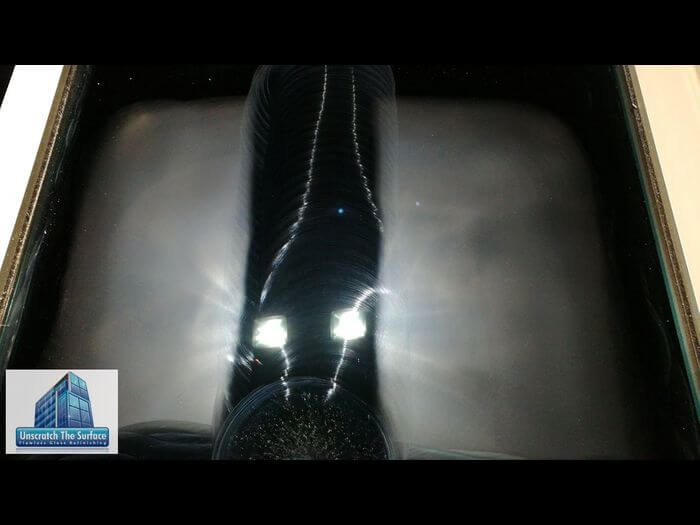
Move Ahead or Get Left Behind – With Glass Restoration
Since then we have consistently improved this proprietary glass resurfacing process in both speed and quality. It seems that almost every other glass resurfacing project we find ourselves on, we discover some aspect of the glass restoration process that can be improved in some way. One area that has seen significant advancements is our approach to motor home glass repair tips, which we’ve integrated into our training for technicians. By analyzing common issues faced during projects, we’ve been able to develop a more efficient workflow that not only enhances the quality of our results but also reduces turnaround time. As we continue to innovate and refine our methods, we remain committed to sharing our findings and expertise with others in the industry. Our commitment to innovation has led us to explore new techniques and materials that enhance our results, ensuring a smoother and more durable finish every time. With our experience, we are proud to offer cutting-edge glass restoration solutions for homes, enabling homeowners to enjoy sparkling, clear surfaces without the need for costly replacements. This dedication to quality not only satisfies our clients but also sets a new standard in the industry. Through ongoing research and development, we have pioneered several innovative glass restoration techniques and benefits that set us apart from competitors. By refining our approach and utilizing advanced materials, we have significantly reduced the turnaround time for projects while enhancing the durability of the finished surface. As a result, our clients not only experience visually stunning results but also a cost-effective solution that prolongs the life of their glass surfaces. Moreover, we understand that homeowners often seek immediate and reliable service, which is why we have optimized our customer support and response times. When searching for expert glass restoration solutions near me, clients can rely on our experienced technicians to deliver exceptional results tailored to their specific needs. Our focus on customer satisfaction ensures that every project not only meets but exceeds expectations, making us a trusted choice for glass restoration in the community. We understand that each glass restoration project is unique, which is why we take the time to assess the specific needs of our clients before proceeding. Our team of skilled technicians is dedicated to providing top-notch glass repair and restoration services that not only restore the beauty of the glass but also enhance its longevity. By continually learning from each project and adapting our techniques, we strive to set new benchmarks in quality and service, reinforcing our reputation as a leader in the glass restoration industry.
So, what is glass restoration? Having a background in Biology and Chemistry certainly helps. Whenever polishing scratched glass with any kind of cerium oxide-based polishing compounds, there are chemical and physical properties involved. Many have noticed that, after a few days to a few weeks after the glass has been polished with any kind of cerium oxide, a haze will reappear on the glass. It can be removed by thoroughly cleaning the glass with an aggressive non – scratching pad but still may appear for a while.
This is from the chemical reaction that continues to occur with the cerium oxide and the silica in the glass. We have now discovered a way to neutralize the chemical reaction as soon as we have completed the polishing process, thereby eliminating the recurring haze that all others invariably do see when they complete their polishing. Part of this haze is also due to the fact that most others are polishing on speed too low to get a highly polished finish on a glass surface that has had its surface molecules ripped apart.
Anyone understanding the polishing process would know that abraded glass must be polished on a higher speed so the glass molecules can actually be “slid” back together, thereby giving the glass it’s sheen and reducing any future haze from returning. If someone leaves swirls and visible haze upon completion, further haze is guaranteed to soon return.
We have recently developed some new improvements to a hand held machine polishing glass resurfacing system . The improvements have led to a significant decrease in glass resurfacing time and scratch removal rates. For example, our test window was tempered and completely scratched. The size was approximate 3′ x 6′ or 18 sq. ft. One man was able to remove all glass scratches and completely polish on high speed until the glass was actually quite slippery and smooth within 35 minutes or about . 5 sq. ft/ minute! Our new improvements to the hand held machine have revolutionized the glass resurfacing industry, making it faster and more efficient than ever before. These advancements have also allowed us to develop a new line of glass polishing products that work seamlessly with the machine, providing a complete solution for glass resurfacing and scratch removal. With these new products and improvements, we are confident that we can continue to set new standards in the glass resurfacing industry. Moreover, our commitment to innovation doesn’t stop here; we are constantly exploring new scratch removal techniques for glass that help achieve even better results. Our team of experts is working diligently to refine these techniques, ensuring they are accessible to both professionals and DIY enthusiasts alike. With ongoing research and development, we aim to lead the market with cutting-edge solutions that cater to all glass polishing needs. In addition to refining our existing products, we are also investing in training programs to educate users on the best practices for utilizing our hand held machine and the new line of glass polishing products effectively. These programs will cover various scratch removal techniques for glass, empowering both professionals and DIY enthusiasts to achieve impeccable results with confidence. As we move forward, we remain dedicated to pushing the boundaries of innovation in glass resurfacing, ensuring our customers have the tools and knowledge they need to succeed.
That equates to about 30 sq. ft. per hour with one person doing all the glass resurfacing steps involved. Now with 2 people working together, the rate of glass scratch removal increases, not by 100% but by about 125-150%! Truly a dramatic increase.
Now jobs that used to be a 2 man job have suddenly become a one man job, even though they involve complete tempered window resurfacing. This resurfacing job (Newport Beach, CA) was actually a 4 man job whereas now it would only require 2. Suddenly scratched glass repair has just become considerably easier. Additionally one of the other scratched glass repair improvements involves the flatness of the finished glass polishing process. Whereas in the past, we had noticed occasionally one of the newer guys would be able to get the scratched glass polished back to clear, it would have a certain “bumpy” appearance to it.
We also noticed this same appearance on other glass restoration jobs. We solved this problem too with the advent of our new polishing pads and newest polishing formula. Therefore, we look forward to perfectly restoring and resurfacing scratched windows and doors in the future, but just in less time! And as they say, “time is money” so we don’t have to charge nearly as much as the other scratched glass guys out there and still deliver a far superior result.
Improvements Removing Hard Water Stains on Glass
An area we have seen vast improvements has been in hard water (hardwater) spot removal from glass. These spots can from from rapid drying of water with high solids content. When the moisture evaporates, the minerals will dry and etch the glass surface if not removed.
Some new developments can remove hardwater stains faster. We have made a hybrid polishing formula that works to chemically and mechanically polishing the glass while buffing it to a brilliant shine. The cerium oxide chemically polishes the glass while a proprietary abrasive removes the actual calcium carbonate and other minerals that were etched to the glass. Free tip : Some companies use 4F pumice flour to expedite the hardwater stain removal. While this does work on lighter limescale, we found something a bit more structured and high tech.
However, in some extreme hardwater buildup cases, the glass still needs to be sanded and resurfaced before buffing and polishing. If only cerium is used to polish, the glass etching from the minerals will still be visible even after the white residue is removed. Sometimes, this is acceptable for clients. When the hardwater spots need to be completely resurfaced, it’s best to sand extensively BEFORE polishing.
Please contact Unscratch the Surface Inc whenever you discover large areas of scratched tempered glass on your large commercial construction project or your beautiful house with its amazing views. We are one of the only companies capable of true resurfacing the glass and flawlessly restoring your glass to a better than new condition in a fraction of the time the other guys will need to even get close to the quality we can deliver. And to save even more money over replacing your scratched windows, ask us about window restoration consulting! “When Your View Matters – Call Unscratch The Surface Inc! ” The meticulous perfectionists of commercial glass restoration! For scratch removal and restoration service in Ventura County and surrounding areas, call 805-295-9020 Our expertise extends beyond just repair; we also offer valuable glass restoration techniques and tips to help you maintain your surfaces long after our services have been completed. By utilizing advanced methods and high-quality materials, we ensure that your glass remains pristine and protected against future damage. Trust Unscratch the Surface Inc to not only restore your glass but also to equip you with the knowledge to keep it looking its best for years to come. We understand that maintaining the aesthetic appeal of your property is crucial, which is why we take pride in sharing our success stories with you. Our portfolio includes numerous examples of scratched glass repair that showcase our ability to transform damaged surfaces into stunning, clear views once more. Whether it’s a high-rise office building or a residential gem, our team is dedicated to exceeding your expectations with each project we undertake. In addition to our glass resurfacing services, we also provide specialized solutions for various glass types, ensuring that no scratch goes unaddressed. If you’re in need of a scratched windshield repair Manhattan Beach, look no further—our skilled technicians are equipped to handle all your glass repair needs efficiently. With our commitment to quality and customer satisfaction, you can trust that we will deliver exceptional results every time. Our team continually invests in the latest advancements in glass scratch repair techniques to ensure we provide the highest level of service possible. We believe in empowering our clients with comprehensive knowledge, enabling you to understand the care required for maintaining your restored glass surfaces. Trust in our seamless approach and dedication to quality, and watch as we bring clarity and brilliance back to your views, transforming your spaces in unforgettable ways. Our commitment to excellence is reflected in the numerous testimonials from satisfied clients who have experienced the unmatched benefits of our services. The ‘unscratch crew glass repair success‘ speaks volumes about our dedication to restoring beauty and functionality to every glass surface we touch. Experience the difference that our innovative techniques and passionate team can make, ensuring your property looks its absolute best for years to come.
